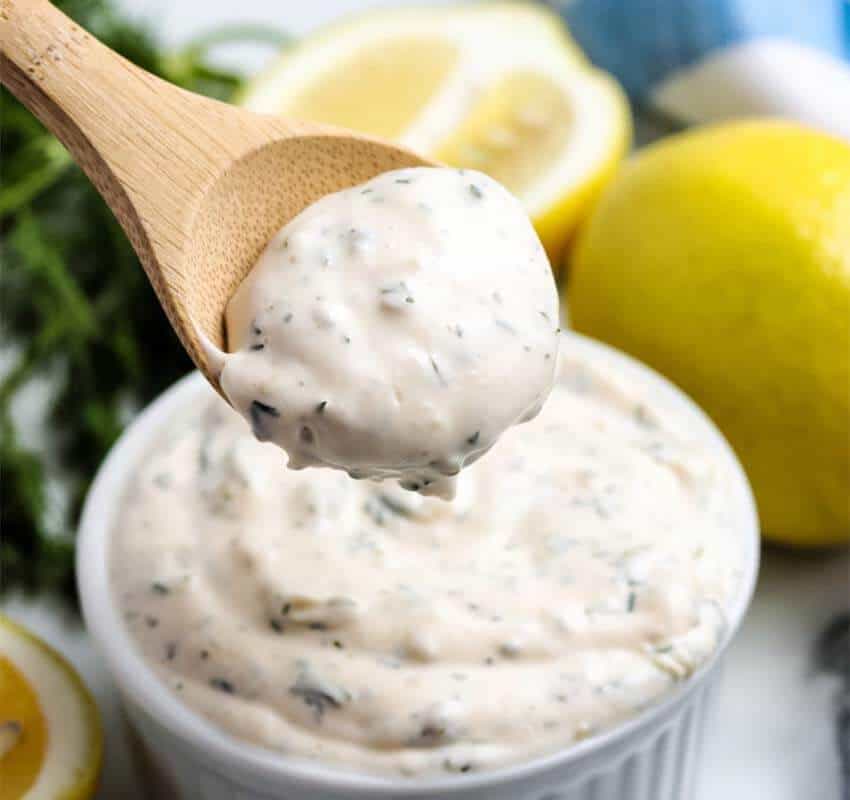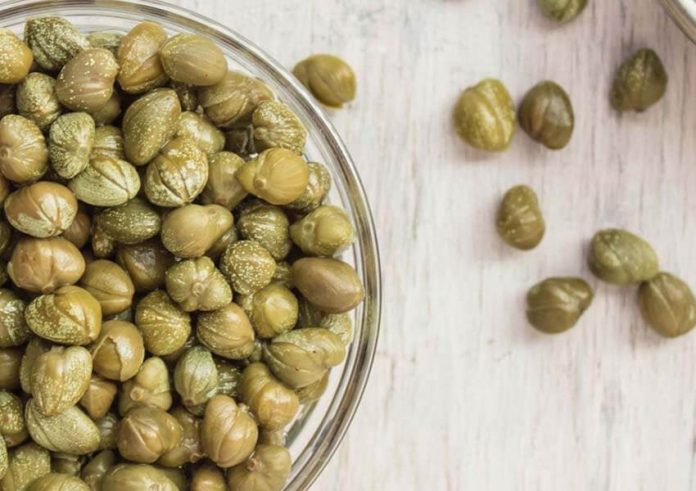I’d wager many of you — like me — have a skinny little jar of capers somewhere in the fridge or cupboard; they’re as ubiquitous as “zoodlers” and red curry paste and probably get used even less.
Mine is on the top shelf of the refrigerator door, where I see it (and feel pressured by it) every time it opens.
I decided to find out once and for all what exactly capers are and where they come from and then to figure out some creative ways to use them.
Capers are the unopened buds of the caper bush, typically sold pickled and salted in brine. Raw, they’re terribly bitter, but once cured, the tiny and smaller-than-pea-sized dark-green buds have a unique flavor that’s herbal, sour, salty and, well, just delicious.
You can also find caperberries, which are a bit bigger and sold pickled with the stem on. These are the mature fruits of the same caper bush, not used for cooking but eaten as appetizers, like olives.

The caper bush, Capparis spinosa, grows in the harsh climates of the Mediterranean rim, flourishing even in extreme drought and torrid sun. The Iberian Peninsula, Iraq, Turkey, Santorini and Morocco all produce capers, but the best-of-the-best (and recognized as a European Protected Designation of Origin product) come from the tiny Italian island of Pantelleria and the Aeolian Islands, off the coast of Sicily.
Hence their use in Italian, Greek, Israeli, Moroccan and Spanish cuisine. Capers add depth to rich foods, bursts of flavor that surprise and delight, and classic dishes like chicken cacciatore, tapenade and pasta puttanesca are known and loved the world over. They also add a zing to any simple pasta dish, hot or cold salmon or other fish entrées and pair well with potatoes too.
Capers — like shrimp, tomatoes, apples and so many other things — are graded according to size, with the smallest being the most sought after (and expensive). The delicate little buds must be picked by hand, a labor-intensive ordeal. When cured in salt, the buds release mustard oil, which accounts for the indefinable but distinctive flavor. Some say dry-cured capers in salt have a better flavor; without vinegar, their subtle floral essence is more apparent. But either way, they’re the key to a great Niçoise salad, caponata, southern-style deviled eggs and so much more.
Pasta Puttanesca
- 6 Tbsp. extra-virgin olive oil, divided
- 4 medium garlic cloves, thinly sliced (not minced)
- 4-6 anchovy fillets, finely chopped
- Large pinch red pepper flakes
- ¼ cup capers, drained and chopped
- ¼ cup chopped pitted black olives
- 1 cup whole peeled tomatoes, roughly broken up by hand
- 8 oz. dried spaghetti
- Small handful minced fresh parsley
- 1 oz. grated Pecorino or Parmesan cheese, plus more for serving
- Salt and pepper
- Optional: 1 (5-oz.) can oil-packed tuna
In medium-sized skillet, combine 4 Tbsp. oil, garlic, anchovies and red pepper flakes. Cook over medium heat about 5 minutes, until garlic is lightly golden. Stir in capers and olives. Add tomatoes and bring to low simmer. Add canned tuna, if using, flaking gently with a fork. Remove from heat.
Cook spaghetti in lightly salted water until just shy of al dente. Using tongs, transfer pasta to sauce, reserving cooking water. Set over medium-high heat and add a few tablespoons of pasta water to sauce. Bring pasta and sauce to a vigorous simmer. Cook 1–2 minutes longer, stirring constantly, adding more pasta water as necessary to keep sauce loose until pasta is perfectly al dente. Remove from heat.
Stir in remaining olive oil, parsley and cheese. Season with salt and pepper. Serve immediately.
Tartar Sauce
One word: fabulous.
- 1 cup mayonnaise
- 1/3 cup minced dill pickles
- 3 Tbsp. minced shallots OR 2 Tbsp. minced white onion
- 2 Tbsp. drained capers, minced
- 2 Tbsp. finely chopped Italian parsley
- 1 Tbsp. freshly squeezed lemon juice
- 1 ½ tsp. Dijon mustard
- ¾ tsp. black pepper
- ½ tsp. salt
- ¼ tsp. hot sauce
Mix all ingredients in a bowl. Let sit 30 minutes to blend flavors. Store refrigerated in an airtight container for up to a week.

Deviled Eggs with Capers & Smoked Salmon
- 12 hard-cooked eggs, peeled
- ½ cup mayonnaise
- 1½ tsp. white wine vinegar
- 1½ tsp. Dijon mustard
- ¼ tsp. salt
- 1½ Tbsp. finely chopped drained capers
- ¾ tsp. lemon zest
- 3 tsp. fresh lemon/lime juice
- Black pepper
- Smoked salmon
- Optional: dash of hot sauce
Slice eggs in half lengthwise; carefully remove yolks, keeping whites intact. Grate or mash egg yolks. Mix yolks, mayonnaise, vinegar, mustard, and salt. Add hot sauce, if desired. Stir capers, zest, lemon juice and pepper into yolk mixture. Spoon or pipe yolk mixture into egg white halves. Top with smoked salmon.
Crispy Fried Capers
Sprinkle into Caesar or other salads, omelets, grilled cheese sandwiches…
- 1/3 cup capers, rinsed and drained
- ½ cup vegetable or peanut oil
Dry capers thoroughly with paper towels. In a large skillet, heat oil until hot over medium-high heat. Carefully add capers and stand back—they will bubble and spit. Sauté, stirring, for a few minutes until bubbling slows and capers have turned a golden brown, being careful not to overcook.
Immediately remove and drain on paper towels.
Black Olive Tapenade with Capers and Anchovies
- ½ cup pitted black olives, preferably oil-cured
- 1 Tbsp. drained capers
- 2 drained oil-packed anchovy fillets
- 3 medium cloves garlic
- 5 basil leaves
- 1 Tbsp. loosely packed fresh oregano, marjoram or thyme leaves
- 1 tsp. Dijon mustard
- 1 tsp. fresh juice from 1 lemon
- Extra-virgin olive oil, as needed
- Salt and pepper, if needed
In food processor: Process olives, capers, anchovies, garlic, herbs and mustard until a finely chopped paste forms. Add lemon juice. With food processor running, drizzle in just enough olive oil to loosen to a spreadable paste, about 2 Tbsp. Season with salt and pepper only if needed.
With mortar and pestle: Roughly chop olives, capers, anchovies and garlic. Place in mortar with herbs. Crush until ingredients reduce to a thick paste (a little chunkiness is okay). Using pestle, work in mustard and lemon juice, then drizzle in just enough olive oil to form a spreadable paste, about 2 Tbsp. Season with salt and pepper if needed.
Janet Blaser is the author of the best-selling book,Why We Left: An Anthology of American Women Expats, featured on CNBC and MarketWatch. She has lived in Mexico since 2006. You can find her on Facebook.
